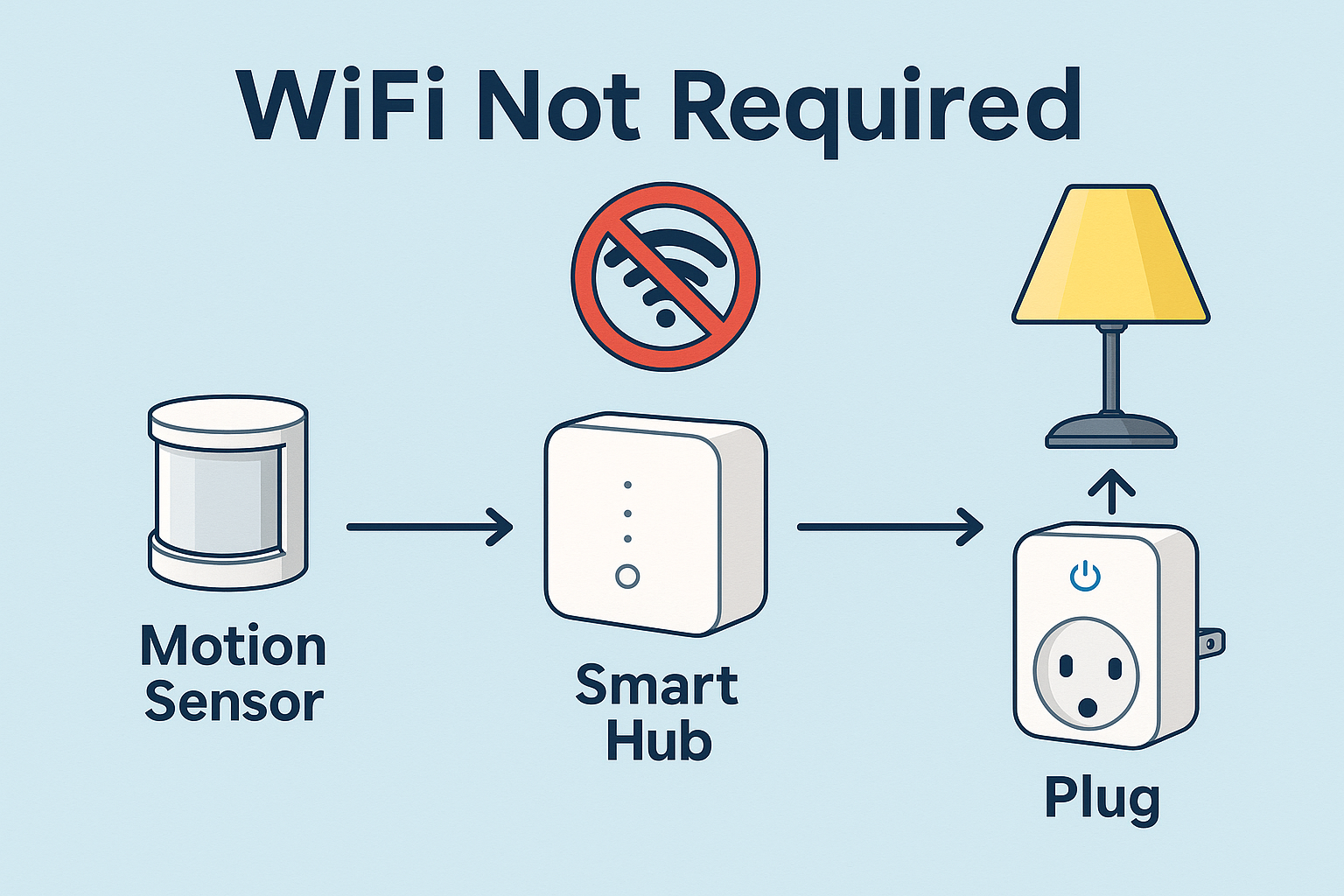Here’s a surprising fact:
You can build a smart home in Malaysia — even if your house has no WiFi.
Whether you’re living in a rural kampung, off-grid home, or just want less reliance on internet, there are real ways to automate your lights, aircond, switches, and sensors without being online 24/7.
In this guide, we’ll explain how smart homes work without WiFi, what tech to use, and where the limits are.
🔌 Do Smart Devices Need WiFi to Work?
Short answer: Not all of them.
Most Malaysians assume that all smart devices = WiFi-dependent. But actually, many gadgets today use alternative wireless methods like:
- Zigbee
- Bluetooth
- Infrared (IR)
- Local LAN
These protocols let you:
✅ Create automation routines
✅ Control gadgets via hub or app
✅ Keep the system running even when the internet is down
🔁 Connection Types Explained
| Type | Needs WiFi? | Works Offline? | Examples |
|---|---|---|---|
| WiFi | ✅ Yes | ❌ No | Smart plugs, cameras, bulbs |
| Zigbee | ❌ No | ✅ Yes (with hub) | Motion sensors, contact sensors |
| Bluetooth | ❌ No | ✅ Yes (short range) | Smart scales, locks, lights |
| IR Remote | ❌ No | ✅ Yes (via hub) | Aircond, TV, fan remote control |
| LAN-only | ❌ No | ✅ Yes (wired) | NAS, routers, some local automation |
🧠 How to Build a Smart Home Without WiFi
You’ll need:
- A Smart Hub — Zigbee or IR-compatible (like TP-Link Tapo H100 or Tuya Zigbee Gateway)
- Non-WiFi smart devices — Like Zigbee motion sensors, switches, buttons
- App that supports offline routines — Tuya Smart Life, Tapo, Aqara
Example: Simple Offline Setup
- 🧱 Tapo H100 Hub
- 👣 Tapo T100 Motion Sensor
- 💡 Tapo Smart Plug (preconfigured)
Routine:
If motion is detected → Turn on plug (even if WiFi is off)
All runs on local radio signal, no internet needed.
⚠️ Limitations of a No-WiFi Smart Home
Before you go full offline mode, know these limits:
| ❌ What You Can’t Do Without WiFi |
|---|
| Remote access outside home (no mobile control) |
| Cloud notifications (no push alerts) |
| Voice assistant integration (no Alexa/Google) |
| Software updates (can’t install firmware updates) |
| Complex routines across multiple brands/apps |
But for basic routines and control within the house, it works just fine.
✅ When It Makes Sense to Go WiFi-Free
- 🏡 You live in rural Malaysia or weak-signal areas
- 🧓 Your parents or elders want a simple setup
- 🔒 You want privacy (no cloud tracking)
- 🔌 You want energy-saving routines but don’t trust tech too much
- 🧰 You’re building a backup smart system (e.g. in case of Unifi outage)
🧠 Techably Pro Tips
- Choose one ecosystem
Stick to Tuya or Tapo — they offer Zigbee hubs + offline routines - Pre-configure with internet
Some devices need WiFi only for setup — once configured, they work offline - Keep firmware updated
Plug into internet once a month to run updates, then go back offline
Conclusion:
WiFi might be the default for most smart homes — but it’s not the only way.
With the right combination of hubs, sensors, and locally-controlled devices, you can build an offline smart home that still feels magical — even in the middle of a paddy field.
So if you’re worried about internet speed, privacy, or connectivity — you’re not alone. And you’re not out of options.

